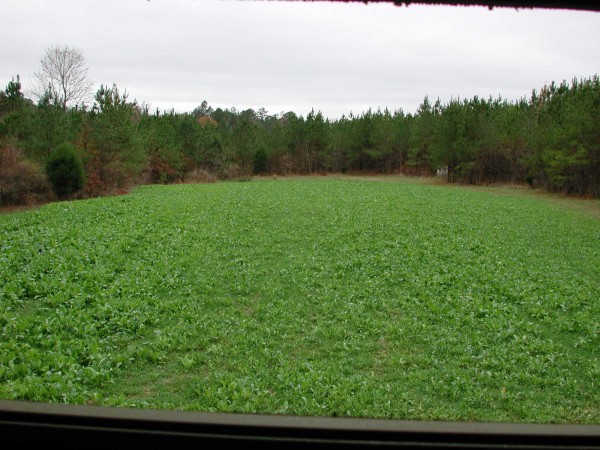Listening Allows Me to Give the Best Counsel
Filed under: Deer Hunting, Hunting Blog, White-tailed Deer
I worked a few properties in South Carolina earlier this week. They were located in the Piedmont of South Carolina where the pine tree is the predominate crop and land cover! These properties were primarily pine forest, with a few acres of food plots. The landowner and his regular guests reported observing deer in the plots on a regular basis. They really enjoyed seeing deer, and really enjoyed consuming the meat and sharing the hunting opportunities with their children and friends.
Working this property reminded me that hungry deer are easy to hunt. This is not a new principle. A very successful hunting strategy is to determine a limiting resource (food, cover, or water) and when deer are using that limiting resource. In this case, food was clearly the limiting resource. There were miles and miles of closed canopy pines (both private and industrial owned) and a few interspersed fescue pastures. There were no row crops or other cultivated crops within the likely range of a deer. Hence the primary source of quality and palatable food were the plots on my client’s property. Hence my client knows exactly where to hunt. From experience, he had learned how to approach each plot based on the predicted wind direction to limit disturbance to the local deer herd. As a result he reported seeing multiple deer almost every time he went hunting.
Because he had identified the limited resource and how to hunt it without disturbing deer, he and his guests have been extremely successful at observing and harvesting deer. I warned him that after he implements the habitat improvements I recommended, the quality of the deer should increase, but the quality of his hunting, measured by number of deer observed, may decrease.
I created a plan to thin the timber significantly so there would be sunshine reaching the forest floor. This action paired with a treatment of herbicide and prescribed fire to control hardwood saplings should result in a huge increase in the quality and quantity of native browse production. This means there will be quality food throughout the property, not just in the food plots. In addition, my plan included significantly increasing the acres of food plots and changing what he planted from solely winter annuals to forage soybeans during the summer and winter annuals during the fall (if the deer consumed the beans before they produced pods). It may take a season or two to get the deer density/forage production ratio balanced.
I’m extremely confident if he implements my habitat recommendations, the herd’s quality will increase. However, I’m not sure his observation rate will increase. We will use a trail camera survey to monitor the herd’s population trends. However, monitoring the satisfaction of the client will be through direct observation and conversation. I was confident in my proposal based on detailed and repeated conversations about his deer management and hunting goals and objectives. It is critical to listen to their objectives. Listening often allows me to give the best counsel.
Growing Deer together,
Grant



